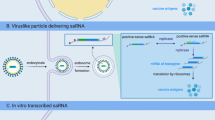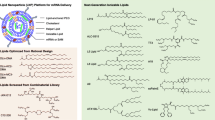Abstract
Hemagglutinin-neuramidinase (HN), a Newcastle disease virus-derived protein, not only mediates receptor recognition but also possesses neuraminidase (NA) activity, the ability to cleave a component of those receptors, N-acetylneuraminic acid (NAcneu, sialic acid). It is known that this protein in mammalian species, including human beings, has interesting anti-neoplastic as well as immune stimulating properties. To explore the use of the HN gene in cancer gene therapy, we constructed a recombinant fowlpox virus expressing the HN protein (vFV-HN) and compared the anti-tumor activity of the recombinant virus with that of wild-type fowlpox virus (FPV) in vivo and in vitro. Here we found that although B16 cells were somewhat resistant to the basal cytotoxic effect of wild-type fowlpox virus, infection with vFV-HN caused a pronounced cytotoxic effect and, the survival of tumor-bearing mice immunized with vFV-HN was significantly increased compared with the survival of mice immunized with the FPV alone. Furthermore, the immunization of mice with vFV-HN elicited a B16 tumor-specific cytotoxic T lymphocyte (CTL) response and clonal expansion of both CD4+ and CD8+ T cell populations in vivo. In addition, T cells from lymph nodes of mice vaccinated with vFV-HN secreted high levels of the Th1 cytokine IL-2 and IFN-γ, indicating that the regression of tumor cells is related to a Th1-type dominant immune response. These results demonstrate that vaccination with vFV-HN may be a potential strategy for cancer gene therapy.
Similar content being viewed by others
References
Dziadek S, Espinola C G, Kunz H. Synthetic glycopeptides for the development of antitumor vaccines. Aust J Chem, 2003, 56: 519–543
Haas C, Lulei M, Fournier P, et al. A tumor vaccine containing anti-CD3 and anti-CD28 bispecific antibodies triggers strong and durable antitumor activity in human lymphocytes. Intl J Cancer, 2006, 118(3): 658–667
Mebatsion T, Koolen M J M, de Vaan L T C, et al. Newcastle Disease Virus (NDV) marker vaccine: An immunodominant epitope on the nucleoprotein gene of NDV can be deleted or replaced by a foreign epitope. J Virol, 2002, 76(20): 10138–10146
Schirrmacher V, Haas C, Bonifer R, et al. Human tumor cell modification by virus infection: An efficient and safe way to produce cancer vaccine with pleiotropic immune stimulatory properties when using Newcastle disease virus. Gene Ther, 1999, 6: 63–73
Bian H, Fournier P, Moormann R, et al. Selective gene transfer to tumor cells by recombinant Newcastle Disease Virus via a bispecific fusion protein. Intl J Oncol, 2005, 26: 431–439
Bian H, Fournier P, Moormann R, et al. Selective gene transfer in vitro to tumor cells via recombinant Newcastle disease virus. Cancer Gene Ther, 2005, 12: 295–303
Schirrmacher V. Clinical trials of antitumor vaccination with an autologous tumor cell vaccine modified by virus infection: Improvement of patient survival based on improved antitumor immune memory. Cancer Immunol Immuneother, 2005, 54: 587–598
Zeng J, Fournier P, Schirrmacher V. Induction of interferon-α and tumor necrosis factor-related apoptosis-inducing ligand in human blood mononuclear cells by Hemagglutinin-Neuraminidase but not F protein of Newcastle Disease Virus. Virology, 2002, 297: 19–30
Li X, Jin N Y, Mi Z Q, et al. The construction of nucleic vaccine expressing apoptin gene, Newcastle disease virus HN gene and IL-18 gene and its antitumor effect on B16. High Technol Lett (in Chinese), 2004, 14(12): 33–36
Jin N Y, Zhang H Y, Zheng M, et al. Immunogenicity of recombinant fowl-pox virus co-expressing structural protein precursor P1-2A and proteinase 3C of FMDV. Chin Sci Bull (in Chinese), 2004, 49(8): 823–827
Jiang W Z, Jin N Y, Cui S F, et al. Construction and characterization of recombinant fowlpox virus coexpressing HIV-1CN gp120 and IL-2. J Virol Methods, 2005, 130(1–2): 95–101
Ribble D, Goldstein N B, Norris D A, et al. A simple technique for quantifying apoptosis in 96-well plates. BMC Biotechnol, 2005, 5: 12
Cao X J, Wang Y M. Serum sialic acid detection with 3,5-dihydroxytoluene. J Clin Test (in Chinese), 1998, 16(3): 153–154
Slavin-Chiorini D C, Catalfamo M, Kudo-Saito C, et al. Amplification of the lytic potential of effector/memory CD8+ cells by vector-based enhancement of ICAM-1 (CD54) in target cells: Implications for intratumoral vaccine therapy. Cancer Gene Ther, 2004, 11: 665–680
Pharoah P D, Dunning A M, Ponder B A, et al. Association studies for finding cancer-susceptibility genetic variants. Cancer, 2004, 11(4): 850–860
Haviv Y S, Curiel D T. Conditional gene targeting for cancer gene therapy. Adv Drug Deliv Rev, 2001, 53: 135–154
El-Aneed A. Current strategies in cancer gene therapy. Eur J Pharmacol, 2004, 498: 1–8
Cassel W A, Garret R E. Newcastle disease virus as an antineoplastic agent. Cancer, 1965, 7: 863–868
Connaris H, Takimoto T, Russell R, et al. Probing the sialic acid binding site of the hemagglutinin-neuraminidase of Newcastle Disease Virus: Identification of key amino acids involved in cell binding, catalysis, and fusion. J Virol, 2002, 76(4): 1816–1824
Iorio R M, Field G M, Sauvron J M, et al. Sauvron,et al. Structural and functional relationship between the receptor recognition and neuraminidase activities of the Newcastle Disease Virus hemagglutinin-neuraminidase protein: Receptor recognition is dependent on neuraminidase activity. J Virol, 2001, 75(4): 1918–1927
McGinnes L W, Gravel K, Morrison, T G. Newcastle Disease Virus HN protein alters the conformation of the F protein at cell surfaces. J Virol, 2002, 76(24): 12622–12633
Washburn B, Weigand M A, Grosse-Wilde A, et al. TNF-related apoptosis-inducing ligand mediates tumoricidal activity of human monocytes stimulated by Newcastle Disease Virus. J Immunol, 2003, 170: 1814–1821
Mahnke Y D, Schirrmacher V. A novel tumor model system for the study of long-term protective immunity and immune T cell memory. Cell Immunol, 2003, 221: 89–99
Washburn B, Schirrmacher V. Human tumor cell infection by Newcastle disease virus leads to upregulation of HLA and cell adhesion molecules and to induction of interferons, chemokines and finally apoptosis. Intl J Oncol, 2002, 21: 85–93
Webster D P, Dunachie S, McConkey S, et al. Safety of recombinant fowlpox strain FP9 and modified vaccinia virus Ankara vaccines against liver-stage P. falciparum malaria in non-immune volunteers. Vaccine, 2006, 24: 3026–3034
Marshall J L, Gulley J L, Arlen P M, et al. Phase I study of sequential vaccinations with fowlpox-CEA(6D)-TRICOM alone and sequentially with vaccinia-CEA(6D)-TRICOM, with and without granulocyte-macrophage colony-stimulating factor, in patients with carcinoembryonic antigen-expressing carcinomas. J Clin Oncol, 2005, 23: 720–731
Author information
Authors and Affiliations
Corresponding author
About this article
Cite this article
Li, X., Jin, N., Lian, H. et al. Construction and anti-tumor effects of recombinant fowlpox virus expressing Newcastle disease virus hemagglutinin-neuramidinase gene. CHINESE SCI BULL 51, 2724–2730 (2006). https://doi.org/10.1007/s11434-006-2176-z
Received:
Accepted:
Issue Date:
DOI: https://doi.org/10.1007/s11434-006-2176-z




